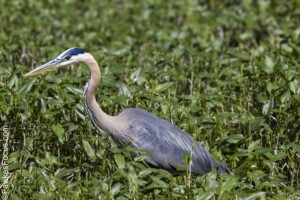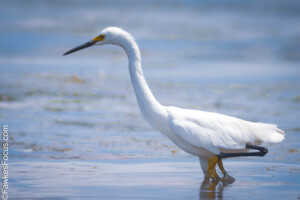The First Time I Met a Heron
I’ll never forget my first serious attempt to photograph a great blue heron. I spotted it standing statue-still in a marsh, looking like some ancient wise creature. I crept closer… and closer… and just as I raised my camera – sploosh! It stabbed the water, came up with a wriggling fish, and gave me what I swear was a smug look before flying off. That’s when I realized: herons and egrets operate on their own schedule, and photographers are just background noise in their world.
Table of Contents
ToggleThese elegant birds have taught me more about patience than anything else in my life. You wait for hours for something to happen, and when it finally does, it’s over in half a second. But when you get that perfect shot? Pure magic.
Herons and Egrets Photo Albums
Heron & Egret Superpowers

1. The Lightning Strike
- A heron’s neck can uncoil faster than you can blink (literally – their strike takes about 0.2 seconds).
- Photography challenge: I keep my shutter speed at 1/2000s minimum and still miss half the strikes.
2. The Balancing Act
Personal mystery: I’ve yet to capture the actual leg switch. I think they do it when I blink.
Egrets will stand on one leg for hours, switching so subtly you’ll never see it happen.
3. The Disappearing Act
- Bitterns (shy heron cousins) can freeze with their bills pointing straight up, becoming instant reeds.
- Embarrassing story: Once spent 30 minutes photographing what I thought was a bittern… that turned out to be actual reeds.
4. The Fashion Sense
- Great egrets grow beautiful plumes in breeding season – which nearly got them hunted to extinction in the 1800s.
- Camera tip: Backlighting makes these feathers glow like angel wings.
My Most Memorable Wading Bird Moments
The Great Blue Heron That Stole My Spot
I set up my tripod at prime location, went to grab a snack, and returned to find a heron standing exactly where my camera had been. It kept my spot warm for 45 minutes while I sulked nearby.
The Snowy Egret Dance Party
Discovered a group of snowy egrets doing what I can only describe as “the fish shuffle” – stamping their feet to scare up prey. Got blurry but hilarious photos of what looks like birds at a disco.
The Green Heron That Used Tools
Watched one drop a bread crust (probably stolen from picnickers) to lure fish. Got photos of this clever trickster in action!
The Time I Became a Perch
Was kneeling in shallow water when a little blue heron landed on my tripod. We both froze for a solid minute before it flew off.
Wading Bird Photography Tips (Learned the Hard Way)
- Bring a Towel (Or Three)
You will end up sitting in mud. You will get splashed. Embrace it. - The Lower the Better
Shoot at water level for those gorgeous reflection shots. Waterproof your camera bag! - Watch the Light
Early morning turns their white feathers golden. Overcast days reveal subtle gray tones. - Patience Isn’t Optional
My record is 4 hours waiting for a heron to strike. It caught a fish right as my battery died.
Meet the Waders [Your Photo Galleries Here]
Great Blue Herons
- Cool fact: They have special neck vertebrae that act like a spring-loaded fishing spear.
- My shot: One swallowing a fish so big it looked impossible. Herons don’t care about physics.
Snowy Egrets
- Cool fact: Those golden feet aren’t just pretty – they help stir up prey in muddy water.
- Camera tip: Catch them in action and you’ll get photos full of flying water droplets.
Green Herons
- Cool fact: One of the few bird species known to use tools (like bait for fishing!).
- Personal win: Finally got a shot of one actually dropping bait into the water.
Black-Crowned Night Herons
- Cool fact: They’re the grumpy night-shift workers of the heron world.
- Fun story: Photographed a juvenile that looked like it had bedhead feathers.
Why These Birds Matter
Wading birds are wetland health indicators. No herons? That means the fish and clean water are gone too. Many species nearly disappeared during the plume-hunting days. Today, habitat loss is their biggest threat – which is why I support [local wetland conservation group].
Try It Yourself
Want to photograph these elegant goofballs? Try:
- Local ponds at dawn (herons are creatures of habit)
- Marshy areas after high tide (when fish get concentrated)
- Anywhere with “No Fishing” signs (birds know where the easy meals are)
Remember: Move slow, stay quiet, and don’t take it personally when they fly away. They’re not rejecting you – they’ve just got important bird business elsewhere.
Happy birding (and wading),
Mike
FawkesFocus.com





